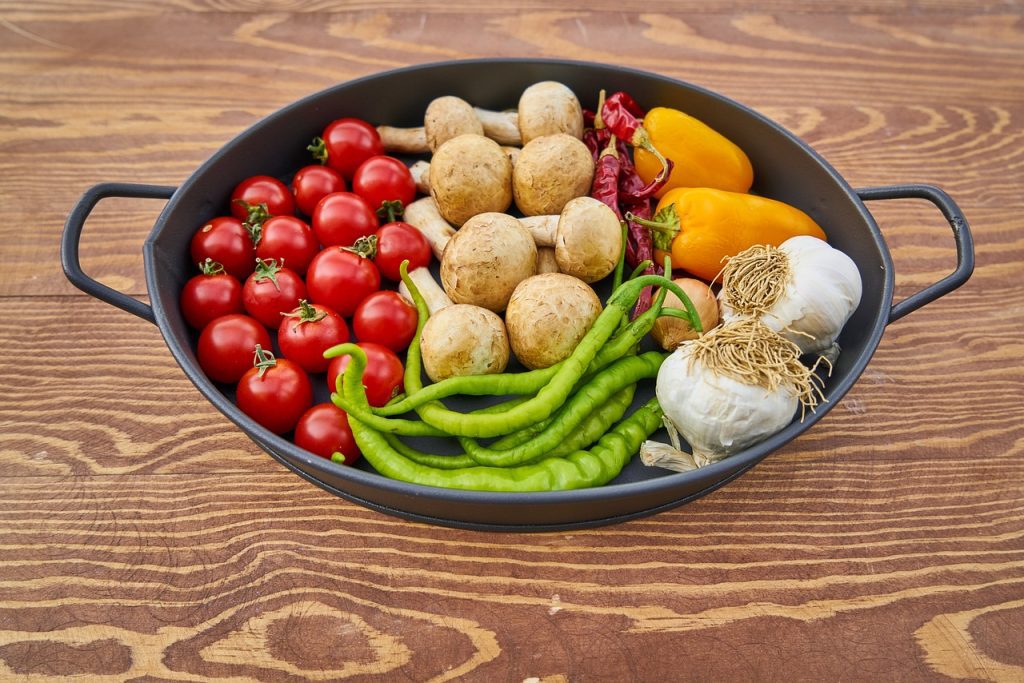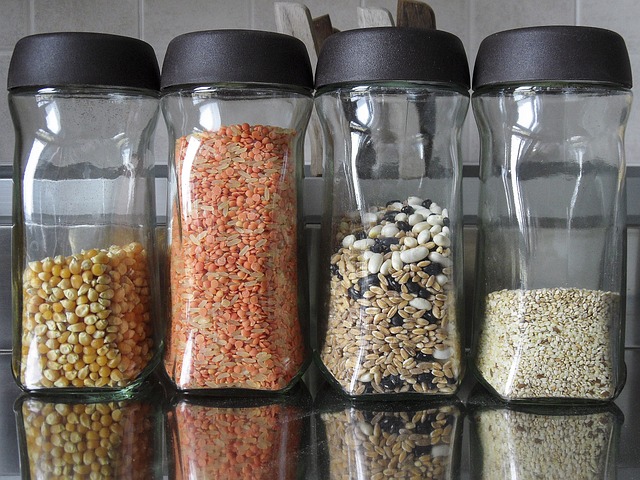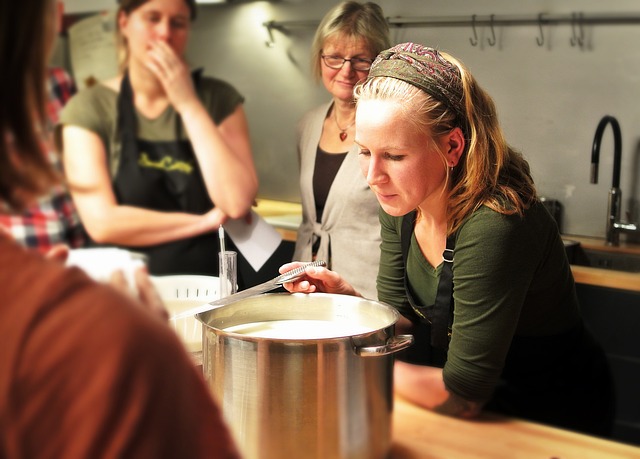Eating healthily is important for everyone, but it can be especially challenging for families on a tight budget. With the rising cost of food and limited time for meal planning and preparation, it’s easy to resort to unhealthy options or pricey convenience foods. However, with a bit of planning and creativity, it is possible to feed your family delicious and nutritious meals without breaking the bank. In this blog post, we will explore some practical tips and strategies for creating healthy family meals on a budget in the UK. From meal planning and smart shopping to cooking from scratch and getting the whole family involved, we’ll cover everything you need to know to make healthy eating affordable and enjoyable for your family.
Plan Ahead

Saving Money and Eating Healthily
Meal planning is a valuable tool for families looking to have healthy family meals on a budget. Here are some of the benefits:
- Reduces food waste: When you plan your meals ahead of time, you can buy only the ingredients you need and avoid buying too much food that ends up going to waste.
- Saves money: By knowing exactly what you need for each meal, you can avoid buying unnecessary items and take advantage of sales and discounts.
- Encourages healthier choices: When you plan your meals in advance, you can ensure that you balance each meal and includes plenty of fruits, vegetables, and whole grains. This can help you and your family make healthier food choices.
- Saves time: Meal planning can also save you time in the long run. By planning your meals ahead of time, you can avoid the stress of figuring out what to make for dinner each night and instead focus on enjoying mealtime with your family.
- Increases variety: With a meal plan, you can ensure that you are incorporating a variety of different foods into your diet, which can help you and your family meet your nutritional needs and prevent boredom with meals.
Overall, meal planning can be an effective way to save money, eat healthily, and reduce stress around mealtime for families on a budget.
Effective Meal Planning
ere are some tips for effective meal planning that can help you save money and eat healthily:
- Make a list: Before you go grocery shopping, make a list of the meals you plan to make for the week. This will help you avoid buying unnecessary items and ensure that you have everything you need for each meal.
- Check for deals: Look for sales and discounts at your local grocery store and plan your meals around the items that are on sale. This can help you save money on your grocery bill.
- Use leftovers: Plan to make meals that can become leftovers for lunch or dinner the next day. This can help you save time and money by not having to cook a new meal every day.
- Double recipes: Consider doubling recipes when you cook so that you have extra food to freeze for future meals. This can help you save money by not having to buy as many ingredients in the future.
- Keep it simple: Don’t feel like you have to make complicated meals every night. Simple meals such as pasta with sauce or roasted vegetables can be just as healthy and satisfying.
- Use a meal planning app: There are many meal planning apps available that can help you plan your meals and generate a shopping list. Some apps even allow you to input your budget and generate meal plans based on that.
By following these meal planning tips, you can save money and eat healthily while still enjoying delicious meals with your family.
Shop Smart

Save Money at the Grocery Store
Grocery shopping can be a significant expense for families, especially when trying to plan for healthy family meals on a budget. Here are some ways to save money at the grocery store:
- Buy in bulk: Purchasing items in bulk saves money in the long run. Look for bulk bins or larger packages of non-perishable items such as rice, beans, and pasta.
- Opt for own-brand products: Many supermarkets have their own brand of products, which are often cheaper than name-brand items. These products are usually of comparable quality and can help you save money.
- Shop the sales: Keep an eye on weekly sales and plan your meals around discounted items. Many stores offer discounts on fresh produce, meat, and dairy products, which can help you save money on healthy foods.
- Look for frozen options: Frozen fruits and vegetables are often cheaper than fresh produce, and they can be just as nutritious. Frozen items also have a longer shelf life, so you can stock up on them when they’re on sale.
- Compare prices: Compare prices across different brands and stores to find the best deals. You can also use price comparison websites or apps to help you find the cheapest options.
- Avoid pre-packaged items: Pre-packaged items such as pre-cut vegetables and individually packaged snacks are often more expensive than whole foods. Instead, buy whole fruits and vegetables and cut them yourself.
By implementing these strategies, families can save money on their grocery bills without sacrificing the quality or nutritional value of their food.
Tips for Making Healthier Choices
Making healthier choices when grocery shopping can be a challenge, especially when trying to stick to a budget. Here are some tips for making healthier choices at the grocery store:
- Buy fresh produce: Fresh fruits and vegetables are essential for a healthy diet. Look for seasonal produce that is locally, as it can be cheaper and fresher.
- Choose lean meats: Opt for lean cuts of meat such as chicken breast, turkey, and pork loin. These cuts are often cheaper than higher-fat options such as steak and can be just as satisfying.
- Avoid processed foods: Processed foods such as chips, cookies, and frozen meals are often high in salt, sugar, and unhealthy fats. Try to limit your consumption of these items and instead choose whole foods such as fruits, vegetables, and whole grains.
- Read labels: When buying packaged foods, be sure to read the labels and avoid items that are high in sodium, sugar, and saturated fats.
- Choose whole grains: Whole grains such as brown rice, quinoa, and whole-grain bread are more nutritious than refined grains and can help you feel fuller for longer.
- Look for low-fat dairy products: Choose low-fat options for dairy products such as milk, yoghurt, and cheese. These options are often cheaper than full-fat versions and are just as nutritious.
By making these healthier choices, families can improve their diets and overall health without breaking the bank.
Cook from Scratch

The Advantages of Cooking from Scratch
Cooking from scratch can have numerous advantages, both for your wallet and for healthy family meals on a budget. Here are some advantages of cooking from scratch:
- Control over ingredients: When you cook from scratch, you have complete control over the ingredients you use. This allows you to choose high-quality, fresh ingredients and avoid unhealthy additives such as preservatives and artificial flavours.
- Reduced sugar and salt intake: Many packaged foods and ready-made meals contain high levels of sugar and salt, which can contribute to a range of health problems. When cooking from scratch, you can control the amount of sugar and salt you use, making it easier to stay within recommended limits.
- Cost-effective: Cooking from scratch can be more cost-effective than buying pre-made meals or eating out. Buying ingredients in bulk, using leftovers, and planning meals in advance can all help to save money on your grocery bill.
- Greater variety: When you cook from scratch, you can experiment with a wide range of ingredients, flavours, and cuisines. This can help to expand your palate and introduce you and your family to new and exciting dishes.
- Develop cooking skills: Cooking from scratch can help you develop valuable cooking skills that will benefit you in the long term. The more you cook, the more confident and competent you will become in the kitchen, allowing you to create healthy and delicious meals for yourself and your family.
By cooking from scratch, you can take control of your diet, save money, and develop valuable cooking skills. With a little planning and creativity, anyone can enjoy the benefits of home-cooked meals.
Recipe Ideas for Easy, Budget-Friendly Meals
Here are some recipe ideas for easy, budget-friendly meals that can be made at home:
- One-pot pasta: This dish is a quick and easy way to get dinner on the table. Simply combine pasta, diced tomatoes, garlic, onions, and any other desired vegetables in a pot with water and simmer until the pasta is cooked. Top with Parmesan cheese and fresh herbs for a flavorful meal.
- Vegetable stir-fry: Stir-fry is a quick and easy way to use up leftover vegetables and create a healthy meal. Simply chop up your favourite veggies, such as bell peppers, onions, carrots, and broccoli, and sauté them with garlic, ginger, soy sauce, and sesame oil. Serve over rice or noodles.
- Slow-cooker chilli: Chili is a budget-friendly and hearty meal that can be made in the slow cooker. Simply combine ground beef or turkey, canned tomatoes, beans, onions, peppers, and chilli powder in a slow cooker and let it cook all day. Serve with cornbread or crackers.
- Baked sweet potato: Sweet potatoes are a healthy and inexpensive ingredient that can be easily transformed into a filling meal. Simply bake a sweet potato in the oven and top with black beans, avocado, salsa, and cheese for a flavorful and nutritious meal.
- Lentil soup: Lentils are a nutritious and budget-friendly ingredient that can be used to make a hearty soup. Simply sauté onions, garlic, carrots, and celery in a pot, add lentils and vegetable broth, and simmer until the lentils are tender. Season with salt, pepper, and other desired spices.
These meals are all easy to make, budget-friendly, and nutritious, making them perfect for busy families who want to eat healthy without breaking the bank.
Use Versatile Ingredients

The Benefits of Using Versatile Ingredients
Using versatile ingredients in cooking can have many benefits, including reducing waste and eating healthy family meals on a budget. Here are some advantages of using versatile ingredients:
- Reducing food waste: When you use versatile ingredients, you are more likely to use up all the ingredients you have on hand before they go bad. This can help to reduce food waste, which is not only good for the environment but can also save you money on your grocery bill.
- Saving money: Using versatile ingredients can help to save you money in the long run. By buying ingredients that can be used in a variety of dishes, you can reduce the number of items you need to buy at the grocery store, which can help to save you money over time.
- Increased creativity: Using versatile ingredients can also help to increase your creativity in the kitchen. By experimenting with different combinations of ingredients, you can discover new flavour combinations and create dishes that are both delicious and unique.
- Time-saving: When you use versatile ingredients, you can save time by using the same ingredient in multiple dishes. This can help to reduce the time you spend shopping for and preparing ingredients, which can be particularly helpful for busy families.
Some versatile ingredients that can be used in a variety of dishes include canned tomatoes, chicken broth, beans, eggs, and whole grains such as rice and quinoa. By incorporating these ingredients into your cooking, you can enjoy the benefits of versatile ingredients while also creating healthy and delicious meals.
Meals that Can Be Made Using Common Ingredients
Here are some recipe ideas for meals that can be made using common ingredients such as beans, lentils, and rice:
- Vegetarian Bean Burritos: Start by cooking some black beans with onion, garlic, and spices like cumin and chilli powder. Fill tortillas with the cooked beans, shredded cheese, salsa, and any other desired toppings. Bake in the oven for a few minutes until the cheese is melted and the tortilla is crispy.
- Lentil Soup: Cook lentils with onion, garlic, and carrot in vegetable broth until tender. Add in some diced tomatoes, a handful of chopped spinach, and any other desired spices. Serve with a slice of crusty bread.
- Rice and Beans Bowl: Cook rice and beans separately, then mix together with chopped vegetables such as bell pepper, tomato, and avocado. Top with some salsa or guacamole and enjoy.
- Chickpea Curry: Sauté onion, garlic, and ginger with curry powder in a large saucepan. Add in canned chickpeas and diced tomatoes and simmer until heated through. Serve over rice and top with fresh cilantro.
- Lentil Tacos: Cook lentils with diced onion, garlic, and spices like cumin and paprika. Serve on tortillas with shredded lettuce, diced tomato, and a dollop of plain yoghurt or sour cream.
These recipes are all simple and easy to make using common ingredients like beans, lentils, and rice. They are also healthy and filling, making them a great choice for busy families on a budget.
Get the Whole Family Involved

The Benefits of Involving the Whole Family
Involving the whole family in meal planning and preparation can have many benefits for healthy family meals on a budget. Here are some advantages of involving everyone in the process:
- Teaching valuable life skills: Cooking is an important life skill, and involving children in meal planning and preparation can help them develop a sense of confidence in the kitchen. They can learn important skills like measuring, chopping, and cooking techniques that they will use throughout their lives.
- Encouraging healthy habits: When children are involved in the meal planning and preparation process, they are more likely to try new foods and develop a taste for healthy foods like fruits and vegetables. They may also be more likely to eat healthy meals if they have had a hand in preparing them.
- Fostering a sense of community: Cooking and eating together can bring families closer together and create a sense of community. When everyone is involved in the process, it can create a feeling of teamwork and collaboration.
- Saving time and money: When the whole family is involved in meal planning, it can help to save time and money. Everyone can contribute ideas for meals and help with grocery shopping and preparation, which can help to make the process more efficient.
- Promoting creativity: Cooking is a creative process, and involving everyone in meal planning and preparation can help to promote creativity in the kitchen. Children may come up with new and innovative ideas for meals, and everyone can experiment with new ingredients and flavours.
Involving the whole family in meal planning and preparation can have many benefits beyond just creating healthy family meals on a budget. It can help to teach valuable life skills, promote healthy habits, foster a sense of community, save time and money, and encourage creativity in the kitchen.
Tips for Getting Kids Involved
Here are some tips for getting kids involved in meal planning and preparation:
- Let them choose recipes: Give kids a few options to choose from when planning meals. This will make them feel involved in the process and more likely to try new foods.
- Involve them in grocery shopping: Bring your children with you to the grocery store and have them help pick out ingredients. Teach them how to read labels and choose healthy options.
- Assign age-appropriate tasks: Depending on their age and skill level, give your children simple tasks like measuring ingredients, stirring, or chopping soft vegetables like mushrooms or zucchini.
- Make it fun: Turn meal preparation into a fun activity by playing music, having a dance party, or making silly faces with vegetables.
- Use kid-friendly utensils: Buy child-sized utensils and kitchen tools to make cooking easier for them. Small mixing bowls, colourful measuring cups, and kid-friendly knives can make the experience more enjoyable.
- Be patient: Cooking with children can be messy and time-consuming, but it is important to be patient and let them learn at their own pace. Let them make mistakes and be creative in the kitchen.
Overall, involving children in meal planning and preparation can be a fun and rewarding experience for the whole family. By letting them choose recipes, assigning age-appropriate tasks, and making it fun, you can encourage them to develop a love for healthy food and cooking.
Wrapping Things Up
Eating healthy and delicious meals doesn’t have to break the bank. With a little planning and creativity, you can create nutritious meals that are budget-friendly and enjoyed by the whole family. By incorporating tips like meal planning, buying in bulk, cooking from scratch, and involving the whole family in the process, you can eat healthy family meals on a budget. Using versatile ingredients like beans, lentils, and rice, and involving kids in the process of cooking and preparation can help teach valuable life skills, promote healthy habits, and foster a sense of community. So start exploring new recipes and make healthy eating an enjoyable and affordable part of your family’s lifestyle.
Read More
- Cognitive-Behavioural Therapy for Weight Loss
- Joint Health: 8 Ways to Protect Your Joints
- 10 Foods That Can Help Clear Up Acne
- Improving Self-Awareness to Increase Your Emotional Intelligence
- 7 Strategies for Increasing Your Social Skills
Disclaimer: The information provided on Healthy Lifestyles for All is intended for general educational purposes only and should not be considered as medical advice. Please consult with your GP or other health professional before making any significant changes to your diet, exercise routine, or any other aspect of your lifestyle. We are not responsible for any adverse effects or consequences resulting from the use of the information provided on our blog.
Comments: I hope you enjoyed reading this post as much as I enjoyed writing it. If you liked it, please leave a comment. If you didn’t like it, disagree with something I have written (I’m okay with that), or think I got something wrong (that’s okay too), please leave a comment as well. We only truly learn from our mistakes, so I am happy to have mine pointed out.
Affiliate Links: Please also note that I may make a small amount of money if you buy one of the products I recommend in any of my blog posts. Rest assured that I have done my own due diligence, and only recommend products that have been tried and tested, and have extremely good feedback. Additionally, many of the products I recommend have 30 or 60-day money-back guarantees, so you can buy in the confidence that if a particular product is not right for you, you can get a refund.

